Most families use the iron very actively. Which is not surprising - it is needed to care for a variety of things, from diapers and undershirts to bed linen and business suits. Alas, over time, the heating device can get dirty and, as a result, ruin expensive clothes.
Therefore, almost every person has a question how to clean the iron from carbon deposits without damaging its coating. The question is really serious. After all, it is necessary not only to take into account the effectiveness of different methods, but also to choose the one suitable for a particular model. Let's consider the simplest methods to clean the iron from carbon deposits.
Content
How to clean the iron from carbon deposits at home
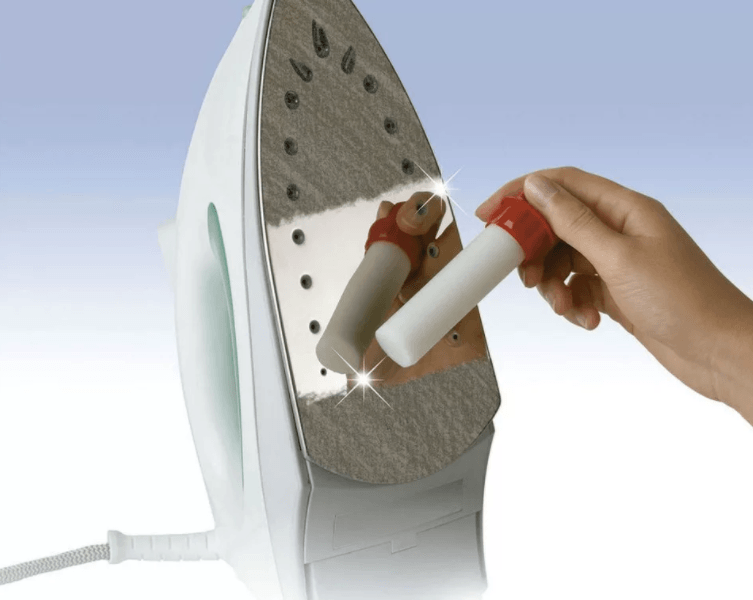
Millions of people regularly think about how and how to clean the sole of the iron from carbon deposits. And if some prefer to use the most modern, expensive and effective means, others prefer simple, proven and often practically free - folk. Let's talk a little about the different options so that each user can decide which method is right for him.
Folk remedies
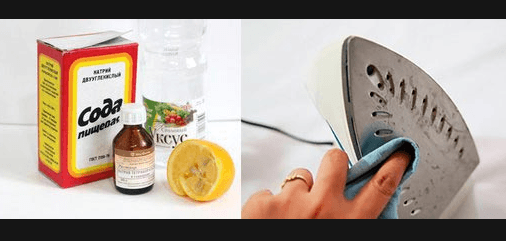
An important advantage of this option is its availability. Yes, when cleaning, you can use improvised tools that cost mere pennies. It's nice that you don't have to go shopping in search of a rare drug. However, the effectiveness of these methods is not always as high as we would like.
Salt
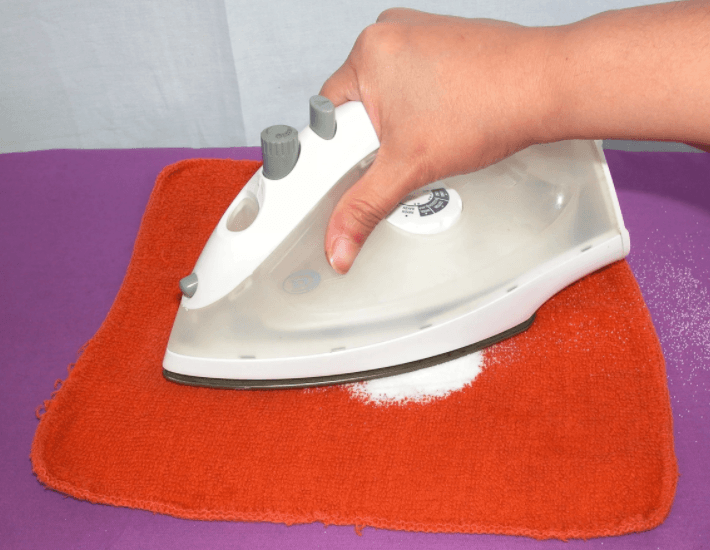
Ordinary kitchen salt has proven itself well. It is better to use a coarse grind. Lay several layers of cotton cloth on a flat surface, then sprinkle salt in a thick enough layer, at least 5 millimeters. Now cover it with gauze, folded two or three times. Walk on it with the included, but not hot, iron several times. You will see how quickly the carbon deposits disappear.
Soda

The simplest soda, which is also found in any kitchen, is best for cleaning the Teflon soleplate of your iron. It's even easier to use. It is enough to dilute the soda with a little water to obtain a concentrated solution. Using a cotton swab, wipe the sole and leave it on for a few minutes. The active baking soda softens the carbon deposits and is easy to remove - just run a soft cloth over the sole.
Soap
Laundry soap has shown itself well. But it should be used immediately after the appearance of stains - old ones are not removed very effectively. As soon as the iron cools down, immediately rub its sole with soap (you can use a remnant, which is not a pity), and then wipe it with a soft cloth.
Vinegar

Finally, you can always clean your iron with vinegar, the method of using it is a little more complicated than described above, but the effectiveness is usually higher. Take vinegar (not vinegar essence) and soak a soft cloth with it. Place the iron on it so that the sole contacts the vinegar. Now wait 8-12 hours. Usually this time is enough for the plaque to soften and it can be removed by ordinary wiping. It is advisable to use respiratory protection and be sure to open the window for better ventilation. Vaporized vinegar has a very unpleasant odor and can be harmful to health if inhaled for a long time.
Specialized substances

This paragraph should be read carefully for those who want to learn how to clean the iron from carbon deposits at home, if folk remedies have not helped. Let's start with a sole cleaning pencil. It is inexpensive, so you can buy several pieces in order to have a small stock in the future. Cleaning is not too difficult and effective, especially if you follow the instructions. Let's write it down point by point:
- Preheat the device to 140 degrees - the temperature of ironing wool.
- Prepare a piece of cotton cloth that you will not mind throwing away after cleaning.
- Rub the stains on the sole with a pencil.
- Quickly remove carbon deposits from the hot sole with a cloth.
- Wipe the cooled iron with a clean, damp cloth and allow to dry thoroughly.
You need to act not only quickly, until the carbon is frozen, but also carefully. Try to clean in a well-ventilated area - contact between the pencil and the hot surface emits acrid, toxic fumes that should not be inhaled.
This pencil also comes in handy if you need to clean the steam holes. It is enough to bring it to the holes during steam generation. Carbon deposits will quickly become liquid and can be easily removed.
But what if you need to descale the iron inside? A decalcifier is needed here. It is sold under several trade names, but the principle of operation is the same for all. Dissolve a powder such as "Anti-scale" in water in the specified proportion and pour it into the iron reservoir. Heat it well, then turn it off and let it cool completely. After 30-60 minutes, repeat the heating procedure and press the Steaming button three or four times. It remains only to rinse the tank with clean water, preferably distilled water. This completes the cleaning.
As you can see, you can clean the iron from carbon deposits using special tools and folk methods. So, you can choose exactly the option that seems optimal to you.
Care instructions for your Teflon iron
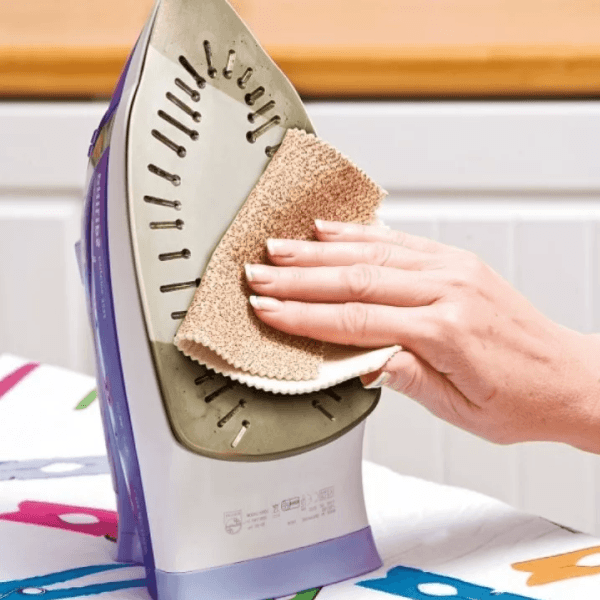
The above methods are great if you are using a ceramic soleplate, steel or aluminum. However, when working with a Teflon coating, different rules and properties must be observed. You need to know about them and not forget.
Teflon is a complex polymer that is not overly resistant to chemicals. As a result, using some pencils for cleaning can damage the soles. This means that an expensive iron will have to be thrown away - it will be almost impossible to repair it. Therefore, it is best to use the folk methods described above.
Fortunately, among them there is an analogue that can replace a pencil. This is the most common paraffin candle, which costs only a few tens of rubles. The main thing is not to take those that contain flavors and dyes - this can only worsen the situation. Better to buy the cheapest, gray and odorless. They are great for cleaning. The way to use it is very simple:
- Wrap the candle in a cotton cloth.
- Heat your iron to 140-150 degrees Celsius.
- Place it on a pallet with a slight forward slope.
- Rub the surface with paraffin. At the same time, make sure that the melted mass does not flow into the steam holes - you can easily remove it, but you will have to spend extra time.
- Iron a soft, natural fabric several times, removing paraffin from the sole.
That's all. Now your Teflon-coated iron, like any iron, will last for many years without causing you unnecessary problems. After all, you know how to easily and quickly get rid of carbon deposits in a variety of ways.
Rules for correct operation
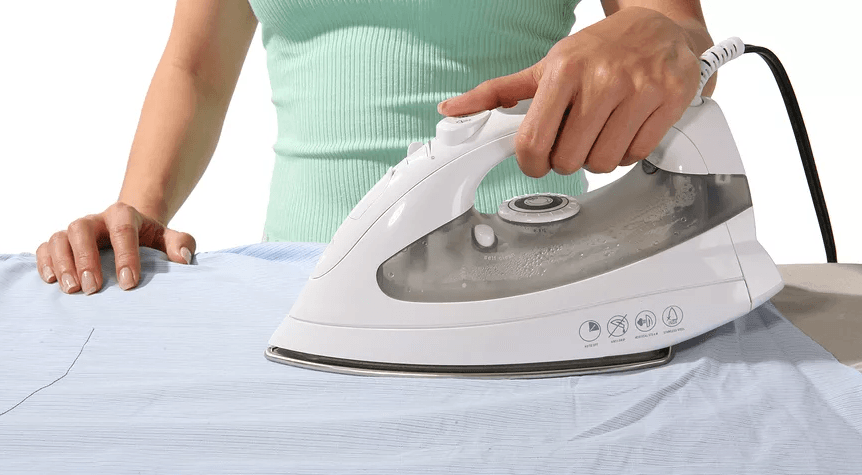
Anyone understands that it is much easier to prevent contamination than to clean the iron from black carbon at home. Ordinary carelessness will ruin beautiful linens or luxurious suits. These are not just words. After all, a dirty iron soleplate not only reduces its aesthetic appeal. When ironing, the dirt will melt and stain the clothes.To prevent this from happening, you need to follow certain rules. Let's talk about some of them:
- Let's start with the fact that the temperature of the iron should be set in accordance with the fabric that you plan to iron. If it's wool or delicate fabric, be sure to use gauze. You can also use cotton fabric.
- After working with the device, be sure to clean the soleplate of any iron - teflon or steel. It is best to use a soft, slightly damp towel for this. You need to wipe it at a time when the sole is no longer hot, but also not completely cold.
- If there is a self-cleaning function, run it at least once every three months.
- Finally, try not to use tap water. It is better to fill the device with distilled or at least just purified, bottled water. It does not contain a lot of salts that can harm the iron.
Conclusion
As you can see, you can use various special means, as well as materials at hand to clean the iron. Therefore, the formation of carbon deposits on the soleplate of the iron will no longer cause any serious problems - it will take you only a few minutes to remove it.



